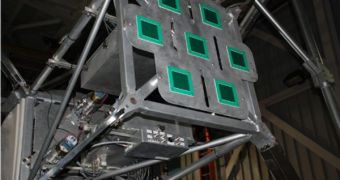Over the past few years, lasers have become indispensable scientific instruments, which are used for a variety of tasks, ranging from measuring the distance from the Earth to the Moon and analyzing air composition, to offering a focal point for the active optics systems in modern telescopes. But, when firing a high-power laser into the atmosphere, you also need to ensure that it doesn't hit any airplanes. This is important to the Federal Aviation Authority (FAA), and a number of ground rules exists, Technology Review reports.
For example, when a laser fires upwards, an observer needs to be on the lookout, scouting for incoming planes at all times. If the spotter sees an aircraft approaching within less than 25 degrees from the laser light, the experiment needs to be stopped, so as to avoid any accidents. But scientists at the University of California in San Diego (UCSD) were not content with this system, which can, indeed, result in a number of mistakes, and decided to create an automated one.
In the new approach, the UCSD team proposes the use of two antennas, one with a broad beam, and the other with a narrow one, to spot for incoming aircraft. Both instruments need to be aligned with the laser beam, and the difference in signal strength between them dictates the speed of the incoming airplane, as well as the distance it has to go before reaching that danger zone around the laser. When the craft gets too close, the new system sends a command to the laser facility, shuttering the beam automatically. The idea has recently moved out of design phase, and has been tested in real-life situations.
After undergoing a brief test period at the Apache Point Observatory's 3.5-meter telescope, in New Mexico, the device was installed near the UCSD campus, in an area directly under the crowded airspace next to the San Diego International Airport. The only problems the team registered were with false-positive results, which triggered the shuttering of the laser beams even if there were no airplanes in sight. There were no instances in which the planes flew past without the beam being interrupted. The success rate of the machine was somewhere around 80 percent, the team concludes.

 14 DAY TRIAL //
14 DAY TRIAL //